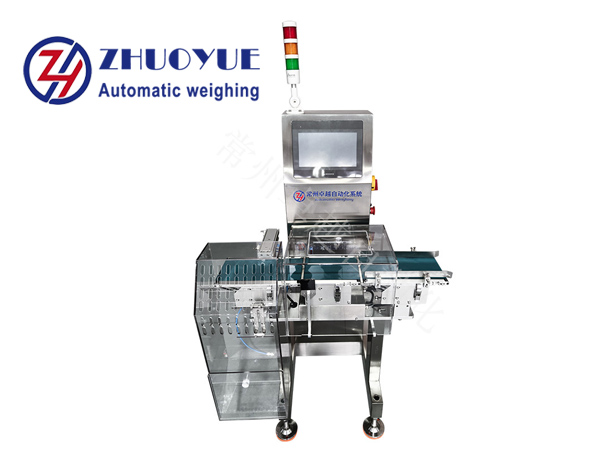How to extend the service life of high-precision checkweighers
As a key equipment for product quality control, the accuracy and stability of high-precision
checkweighers are of great significance for ensuring product quality and improving production efficiency. However, as the use time increases, the performance of the checkweigher may gradually decline or even fail. Therefore, how to extend the service life of the high-precision checkweigher is crucial to reducing production costs and improving economic benefits.
1. Reasonable selection of
checkweighers
When purchasing a high-precision checkweigher, you must first select the appropriate model and specifications according to production needs and product characteristics. For example, for products with a large weight range and high precision requirements, a checkweigher with a large range and high precision should be selected; for checkweighers that need to be frequently moved or used in different environments, models with strong portability and good adaptability should be selected. In addition, when purchasing, factors such as the brand's reputation and after-sales service should also be considered to ensure that the purchased checkweigher is of reliable quality and stable performance.
2. Correct use of checkweighers
1. Operating specifications: Before using the checkweigher, the operator should fully understand its usage and precautions and follow the operating procedures. Avoid improper operation such as overloading, overspeeding, and overheating to avoid damage to the checkweigher.
2. Regular calibration: To ensure the accuracy and stability of the checkweigher, calibration should be performed regularly. Calibration should be performed in accordance with the instructions to ensure the accuracy of the calibration results.
3. Cleaning and maintenance: The checkweigher should be kept clean and dry during use to prevent dust, moisture and other pollutants from entering the scale body. Clean the scale body, sensors and other components regularly to ensure their normal operation.
III. Strengthen maintenance
1. Regular inspection: Regularly inspect the checkweigher, including sensors, instruments, power supplies and other components, and deal with problems in a timely manner. At the same time, check whether the structural components such as the scale body and bracket have abnormal conditions such as deformation and cracks. If there are any, they should be replaced or repaired in time.
2. Lubrication and maintenance: For parts that need lubrication, such as bearings, transmission mechanisms, etc., lubrication and maintenance should be performed regularly to reduce wear and friction and extend service life.
3. Protection and maintenance: For checkweighers used in harsh environments, protective measures should be taken, such as installing protective covers and dust covers, to prevent dust, moisture and other pollutants from damaging the checkweighers.
IV. Updating and upgrading technology
With the continuous advancement of science and technology, new checkweighing technologies and equipment are constantly emerging. In order to improve the performance and stability of checkweighers, attention should be paid to the development of new technologies and the checkweighers should be updated and upgraded in a timely manner. For example, more advanced sensor technology, signal processing technology, etc. should be used to improve the accuracy and stability of checkweighers; intelligent and automated control technology should be used to improve the automation and ease of operation of checkweighers.
V. Establish a management system
In order to ensure the normal operation of the checkweigher and extend its service life, a scientific management system should be established. This includes formulating usage procedures, operating procedures, maintenance procedures, etc.; establishing equipment files to record the model, specifications, manufacturer, purchase date, calibration date and other information of the checkweigher; formulating equipment maintenance plans, and regularly inspecting, maintaining and repairing the checkweigher; strengthening the training and management of operators, and improving the skills and sense of responsibility of operators.
